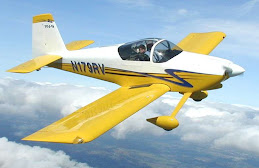Friday 30th Nov 2hrs 40min
Assembled the right Elevator and match-drilled skins, spars and ribs. Disassembled and deburred the skin. Deburred spar and dimpled the top flange. Deburred and dimpled E-906 root rib (except 4 holes at aft end)
 Visually, there was a lot more progress this evening. The work seemed to go much more quickly than yesterday.
Visually, there was a lot more progress this evening. The work seemed to go much more quickly than yesterday.You have the choice of using solid rivets to attach the skin to some sections of the bottom of the spar - where you can access them through the hinge openings. I had a look at this and what bothered me was that the pattern would look random. So, I decided I had nothing against pop rivets and chose to use a full line of them across the full width of the spar. This meant driling out to #30 and dimpling accordingly.
































